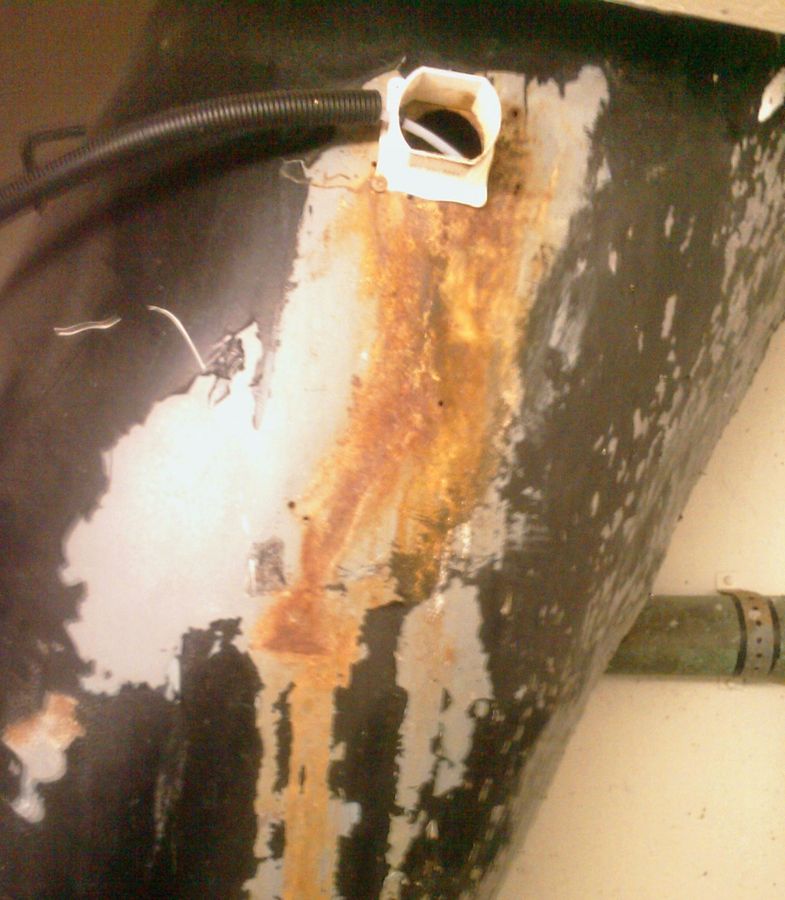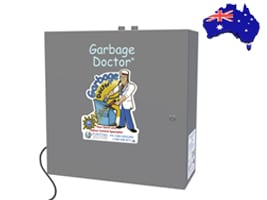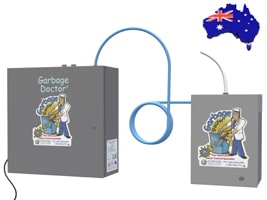Corrosion from Ozone Generators in Garbage Chutes
Using Ozone generators within garbage chutes, garbage compactors and garbage rooms has become the most common form of treatment for garbage odours and airborne pathogens here in Australia.
However, there are some important considerations to be aware of when selecting the Ozone equipment for treating this area.
Probably the most important aspect to consider when choosing an ozone generator is whether it uses ‘Corona Discharge’ or ‘Ultraviolet’ technology. These are the two most common types of Ozone generators on the market, and neither one is inherently better than the other, but they do have important strengths and weaknesses that make them most suitable for certain applications.
If you are just skimming this page, here’s the summary: Use only Ultraviolet Ozone systems in garbage applications (such as our Si-Zone® technology). Do NOT use Corona Discharge Ozone generators as they can create by-products which are highly corrosive to steel.
Corona Discharge Ozone Generators
Corona Discharge Ozone generators create Ozone by using an electrical spark to split Oxygen molecules – which simulates the way nature creates Ozone during a lightning storm. This method is great for certain applications but should be avoided for use in odour control where steel fittings are present (such as a garbage chute or compactor!).
The reason for this, is that in addition to splitting Oxygen molecules the Corona Discharge processes will also split Nitrogen molecules (the ambient air is 78% Nitrogen), which creates a by-product called Nitrogen Oxide. When this Nitrogen Oxide comes into contact with moisture (such as humidity) it can create a corrosive substance called Nitric Acid.
Below are photos of garbage chutes in Australia which were damaged from another companies ozone product:
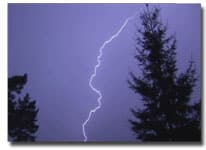
Ultraviolet Ozone Generators
The second method of creating Ozone is by using a specific bandwidth of ultraviolet light of 185nm (which is similar to how the suns UV rays sustain the Ozone layer in our atmosphere).
When Ozone is created by Ultraviolet light, the Ozone generator does not split the Nitrogen molecules, therefore no Nitric Acid is created.
There are several other important benefits to UV Ozone generators for garbage odour control applications, such as;
- Stable output regardless of humidity
- A more pleasant smelling Ozone (due to the absence of Nitrogen Oxide)
- Lower Ozone ppm concentrations enables safer production control
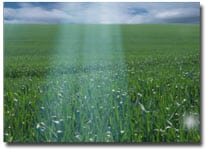
All of our Garbage Doctor® systems use our proprietary Si-Zone® ozone generating technology – which uses Ultraviolet light and is guaranteed to be free from Nitrogen Oxide/Nitric Acid corrosion.
Featured Solution #1
Neutral smelling garbage chute and garbage room
Odour and germicidal control using ozone into your garbage room (targeted at your rubbish bins or garbage compactor) to neutralise odours at their source, and ozone dispersed into your garbage chute.
FIND OUT MORE
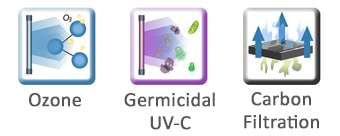
Featured Solution #2
Scented garbage chute and neutral garbage room
Odour and germicidal control using ozone into your garbage room (targeted at your bins or compactor) to neutralise odours at their source, and a pleasant scent dispersed into your garbage chute.
FIND OUT MORE

Our Ultraviolet Ozone Generators are well suited and have been installed in a wide range of waste management solutions from manufacturers such as: Elephants Foot, WasteTech, JJ Richards, Wanless, James Hardie, JD MacDonald etc.
Garbage Doctor® installation and service technicians are available throughout Sydney, Melbourne, Brisbane, Gold Coast, Sunshine Coast, Airlie Beach, Tweed, and Auckland (New Zealand).
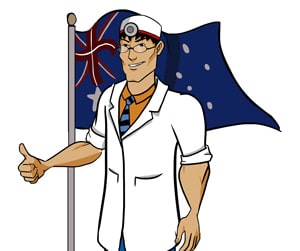
The Garbage Doctor® products are proudly designed and built in Australia.
